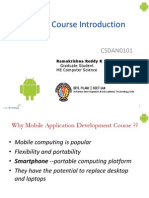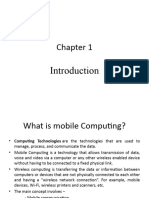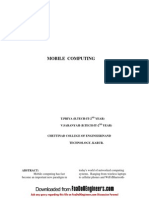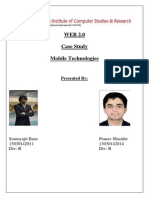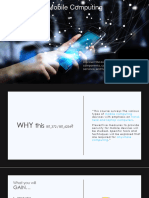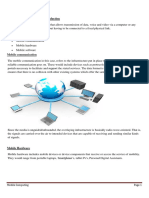0% found this document useful (0 votes)
125 views25 pagesThe Future of Mobile Computing: Mark Frydenberg CIS Department
Mobile computing has evolved significantly from luggable computers in the 1990s to today's convergence of phones, music players, cameras, and other devices into multifunction mobile phones and tablets. Key milestones included Bentley University requiring laptops in 1985 and introducing tablet PCs in 2005. As mobile technology advances, barriers around voice and sound quality, battery life, and connectivity will continue to be addressed. Experts predict that by 2011, mobile phones will be widely used as mobile wallets and voice activation will better enable web access and searching. WiMax technology may allow for improved mobile broadband access without cables by 2008.
Uploaded by
José CardosoCopyright
© Attribution Non-Commercial (BY-NC)
We take content rights seriously. If you suspect this is your content, claim it here.
Available Formats
Download as PPT, PDF, TXT or read online on Scribd
0% found this document useful (0 votes)
125 views25 pagesThe Future of Mobile Computing: Mark Frydenberg CIS Department
Mobile computing has evolved significantly from luggable computers in the 1990s to today's convergence of phones, music players, cameras, and other devices into multifunction mobile phones and tablets. Key milestones included Bentley University requiring laptops in 1985 and introducing tablet PCs in 2005. As mobile technology advances, barriers around voice and sound quality, battery life, and connectivity will continue to be addressed. Experts predict that by 2011, mobile phones will be widely used as mobile wallets and voice activation will better enable web access and searching. WiMax technology may allow for improved mobile broadband access without cables by 2008.
Uploaded by
José CardosoCopyright
© Attribution Non-Commercial (BY-NC)
We take content rights seriously. If you suspect this is your content, claim it here.
Available Formats
Download as PPT, PDF, TXT or read online on Scribd
/ 25


